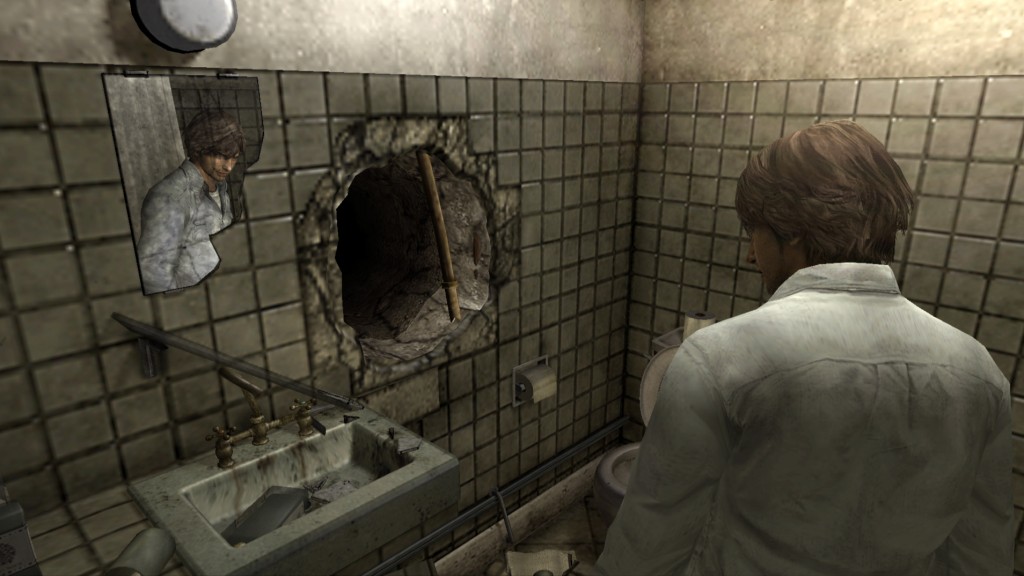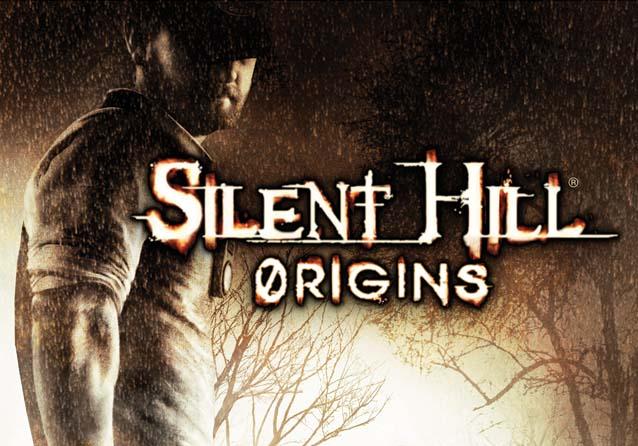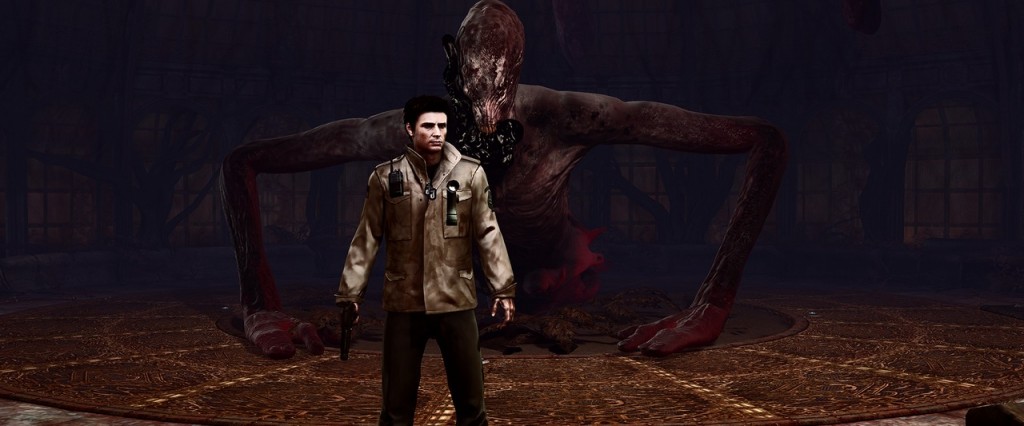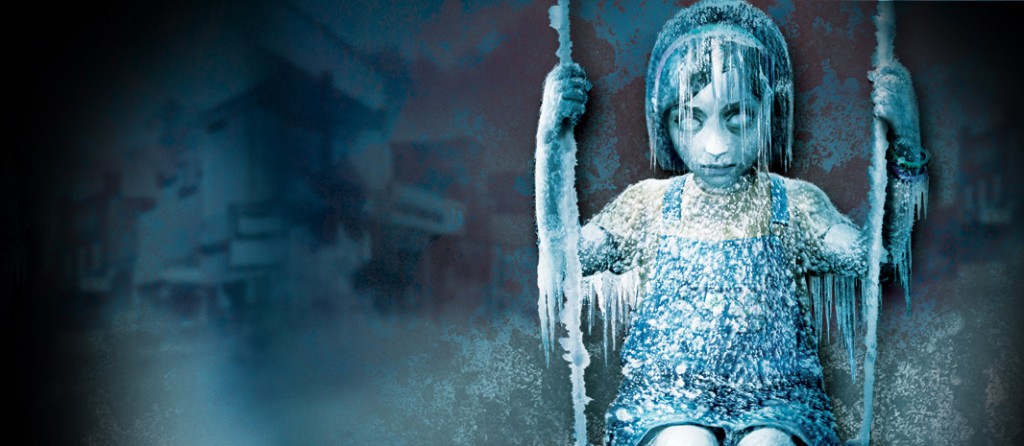Like any great film, a video game is often only as strong as the sum of its parts. Music can be just as important as gameplay or visuals to making or breaking a game. In his new column Audio Play, Deadshirt Video Games Editor Kyle Herr showcases some of his favorite composers from the past and present.
I’m a big fan of video game soundtracks, which I’m sure is starting to show by now, but I’m also a huge fan of horror games. Really, the whole genre of horror is a passion of mine. There’s nothing like coming face to face with the creeping sensation of dread and the fear of the unknown, but handled in a contained, safe environment. One series in particular, Silent Hill, has long satisfied both of these loves in one psychologically frightening package. So it only makes sense that I take the opportunity in this most spooky of months to unveil the Audio Play: Silent Hilloween Special. Over the course of four weekly installments I will take you on a trip through my favorite cursed mountain town on a musical journey into the mind of longtime series composer Akira Yamaoka. Now turn down the lights, plug in your headphones, and relax… for now.
Silent Hill 4
Kind of the odd man out in the numerical series, Silent Hill 4: The Room was a rather drastic departure from the traditional formula. Rather than taking place in the town of Silent Hill, most of the game takes place in a town called South Ashfield, and in several alternate reality versions of the town. Much like the second game, there is no direct tie to any other installment in the series, but a few of the characters are pulled from passing references in previous titles.
This game is meant to feel more claustrophobic than previous titles, as you begin and frequently return to a central hub area, protagonist Henry Townshend’s apartment. The front door of the apartment is chained shut and over the course of the game the entire apartment begins to look more and more like the “otherworld” as various ghosts begin to possess it. This leads me to what I believe is the main fault of the music.
The overarching claustrophobia presents a great theme that is never really conveyed in the music. In fact, much of the soundtrack just feels like B-sides from the previous games. Many of the tracks carry the same ambient melodies, backed by drum beats that were present in Silent Hill 2. There’s no sense of urgency or fear of tight spaces in the music. That’s not to say they’re bad songs, just not very unique ones.
That kind of song makes up a majority of the soundtrack, while the rest of the tracks are mostly vocal pieces like in Silent Hill 3. Here’s a live bonus song included on the soundtrack that sounds more than a little like previous title themes, namely “You’re Not Here” and “Theme of Laura.” In fact, at 4:10 you can hear a guitar riff that sounds almost identical to the main melody of the original Silent Hill theme.
Silent Hill: Origins
After the release of Silent Hill 4: The Room, the original Team Silent was disbanded, leaving future installments to entirely new studios outside of Konami’s in-house teams. While Akira Yamaoka remained the composer for several more games, Silent Hill: Origins, a game developed for the Sony PSP, was developed by the UK branch of Climax Studios. As you can probably gather from the title, this game was meant to serve as a prequel, in this case to the original Silent Hill.
While this game was much more of a traditional installment than Silent Hill 4: The Room, the music was, again, nothing too out of the ordinary. By this point I feel like Yamaoka began to phone it in and just relied on his older compositions as inspiration. A positive on this particular soundtrack, however, is that some of the inspiration seems to have been pulled directly from the original, which is not something he’s done much of prior to this game.
This soundtrack also features a good amount of “modern piano” technique to create atmosphere. Like much of this soundtrack, I would describe it as hit or miss. Again, not a great departure from previous games.
Silent Hill: Homecoming
Often considered the black sheep of the series, Silent Hill: Homecoming was created by Double Helix, an American studio, and was the first of the series to be released on the PlayStation 3 and Xbox 360. While this game was the first to take advantage of new technologies, it is often forgotten. In fact, the Japanese version of this game was cancelled, making it the first installment to not see a release in the series’ country of origin. As you may have expected, the soundtrack in this game is about as par for course as the last two games. Many of the tracks in this game rely on electronic drum beats and somber piano melodies.
Unfortunately, there isn’t a whole lot to say about this installment other than you can tell that it borrowed heavily from those that came before it. It lifts plot elements and even specific monsters that have become synonymous with the series but did not fit in the story line of this game. Homecoming was somewhat of a mess and really one of the most forgettable in the series. The soundtrack is nothing special either, even with occasional interesting tracks that incorporate throwback sounds in vaguely interesting ways.
Silent Hill: Shattered Memories
The final game in the series to feature the work of Akira Yamaoka was the Nintendo Wii exclusive title Silent Hill: Shattered Memories. Surprisingly, this game is a big departure from the traditional formulas of the past games and is actually a retelling of the original Silent Hill. Shattered Memories features a framing device wherein the player periodically returns to a psychiatrist and answers questions in first person, breaking up the third person journey of Harry Mason. It also changed the traditional atmosphere of fog and rust to one of ice and snow.
While the music itself wasn’t too different from previous games, this time the biggest influence was the discordant noise of the first game rather than the ambient songs of the second and third games. It also was the first game in the series to feature dynamic music that changed based on what is happening around the player.
This game is also very polarizing among fans, as there are some elements that are polar opposites of those found in the older games. For instance, the player is usually not a skilled combatant, but has some means of fighting back against the monsters. In this installment, there is no way to kill enemies and they simply trigger “chase sequences” in which you have to run from them as the environment shifts around you.
While this game was certainly a departure, I appreciate it for what it is, and I feel like it was a good departure point for Yamaoka. Just as the gameplay came full circle and was somewhat reinvented, I believe that Yamaoka’s music returned to what initially made it special and as such, he left on a high note.
I hope that you enjoyed this month long voyage into one of my favorite series, a series oozing with atmosphere and amazing music. Audio Play will return in November in it’s standard month-by-month basis with a new composer and series of games. See you then!
Do you have favorite musical moments from the Silent Hill series? Post a comment below, or hit us up on Facebook or Twitter!





